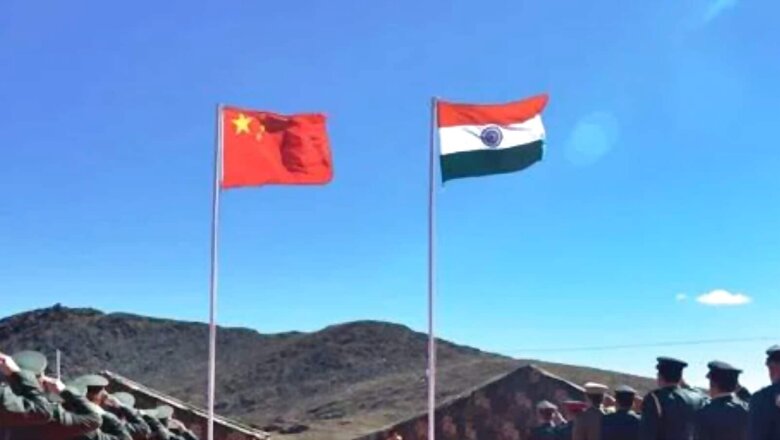
views
India has maintained silence over China’s live fire military drill against Taiwan in the wake of United States’ House of Representatives Speaker Nancy Pelosi’s visit to the island.
The US has condemned the drill as irresponsible and provocative, while affirming ‘One China’ policy.
Australia and Japan, both treaty allies of the US, have slammed China as its missiles landed in Japan’s exclusive economic zone.
Meanwhile, ASEAN nations have called for maintaining peace and stability in the region while affirming One China policy.
There can be one or more reasons behind India’s silence.
One, India may believe that any statement made now will be interpreted by Beijing as an affirmation or denial of One China. New Delhi does not want to talk about One China in relation to Taiwan, and use it as a trump card in dealing with China. Since 2010, India has avoided using the term One China in bilateral statements in order to seek reciprocity. Since April 2020, India has been in eyeball-to-eyeball conflict with China on the Himalayan front, and military-level talks have failed to produce the desired results.
Two, India does not believe the situation is serious enough to warrant a statement at this time. After China failed to deter Pelosi’s visit, India may see the military exercise as Xi Jinping venting to a domestic audience. It is an important year for Xi as he seeks an unprecedented third term and will not risk a war with an uncertain outcome, especially in the aftermath of the Russia-Ukraine conflict. Despite China’s large and growing naval might, the 100-mile (160-kilometer) sea between China and Taiwan is a formidable barrier.
Chinese propaganda flooded social media, showing amphibious landing craft on its beaches, ready to take Taiwanese islands Kinmen and Matsu, which are close to China’s shores and appear to be low-hanging fruit. That, too, has not occurred, demonstrating that, despite its bravado, China understands the consequences of any such acts, demonstrating the limits of its power.
Taiwan has reacted calmly and defiantly to the Chinese military drill. Its navy has shadowed Chinese warships, and its aircraft have conducted combat air patrols armed with air-to-air and anti-ship missiles. Despite the fact that it was designated for the drill, Taiwan has denied any incursion into its territorial waters by the Chinese navy.
Within China, the reaction has been one of disappointment due to the lack of action, which was built up with the warnings and shrill media campaign in the days leading up to Pelosi’s visit. Some Communist Party members were embarrassed by the response and sought to leave the party, according to comments on Chinese social media. China began the exercises after Pelosi had left Taiwan and had not attempted to obstruct or disrupt her travel, despite its media threatening to shoot her plane down.
In the run-up to the visit, the US officials concluded that China’s belligerent threats are simply an intimidation tactic. Even as the US has condemned the Chinese reaction, President Biden has said he is not worried.
Three, Taiwan wanted this visit to raise its profile and draw international attention. The US called China’s bluff of consequences, including shooting down of the plane. Both sides wanted this visit and factored in China’s probable responses, therefore there is no need for India to say anything at the moment.
Four, India is unsure which way Taiwan’s political fortunes will swing. The opposition Kuomintang party is pro-unification and was in power from 2012 to 2016. The Democratic Progressive Party, Taiwan’s current ruling party, is pro-independence and has won consecutive presidential elections since 2016, with public sentiment in Taiwan increasingly favouring independence.
Five, India has yet to receive substantive support from Taiwan. Taiwan is a sophisticated manufacturing country that has played a critical role in China’s rise as a manufacturing powerhouse, investing approximately $200 billion in China between 1991 and 2021. Taiwanese investments in the manufacturing sector can benefit India, which is positioning itself as a viable alternative to China, for resilient global supply chains.
India, which figures prominently in Taiwan’s “Southbound policy,” has recently received investments from Taiwanese firms, particularly in the critical semiconductors sector. The two countries signed a bilateral investment agreement in 2018 and began talks on a free trade agreement in 2021. Over 120 Taiwanese companies are present in India, having invested more than $2.3 billion in total by 2021. Large investments have come from Taiwan into India as its companies seek to decouple from China due to cross-strait tensions and global supply chain rebalancing will likely draw support for Taiwan in the future.
Six, it is in India’s best interests to remain silent and watch. Taiwan is far away from India and has no direct impact on it. In Taiwan, unlike in Ukraine, there are a few students. As war clouds loomed over Ukraine, India was concerned about the safety of its citizens.
China will not respond favourably to India’s affirmation of One China. In fact, China claimed the entire state of Arunachal Pradesh in 2006, when India affirmed its commitment to One China. In 2003, India recognised Tibet as part of Chinese territory and reiterated that Tibetans are not permitted to engage in anti-China political activities in India. China expects India to follow One China, despite the fact that it openly claims large portions of Indian territory and has occupied 38,000 square kilometres of Aksai Chin. Despite India’s warnings, it issued stapled visas to Indian citizens from Arunachal Pradesh and Jammu and Kashmir, and is building infrastructure in Pakistan-occupied Kashmir. It does not recognize Jammu, Kashmir and Ladakh as an integral part of India and objects to Indian leaders and foreign dignitaries visiting the Indian state of Arunachal Pradesh.
Growing trade relations and India’s Prime Minister Narendra Modi’s desire for better relations with China did not prevent Xi Jinping from shredding agreements signed over two decades and initiating a conflict that resulted in the first deaths in five decades in Galwan in June 2020. It has since built and upgraded civil and military infrastructure in Ladakh, and despite military-level talks that have failed to break the impasse, it is flying provocatively near the Line of Actual Control.
Being mindful of Chinese sensitivities has opportunity costs for India. As a counterweight to China, democratic India with its large market is viewed favourably as an alternative. It is also seen favourably in the transfer of weaponry and the sharing of technologies, which aids India’s goals of developing itself and building a strong military industrial complex as it strives for self-sufficiency. India is at the centre of the democratic world’s Indo-Pacific strategies, which it can use to develop itself. Closer ties with Taiwan, a manufacturing powerhouse, with a focus on attracting investments in India’s manufacturing sector, will create jobs in India, reduce India’s trade deficit with China, and earn export revenue in the long run and compete with China. India is targeting Taiwan’s electronics and semiconductor majors and also pursuing a free trade agreement with the East Asian nation. Not showing support at a crucial time may negatively impact investments.
China has normalized its aggressive behaviour while playing victim. No matter what the reasons, India’s silence is being heard and questions asked about where India stands. India had room to manoeuvre on the Ukraine issue, as it kept its relations with Russia in mind and its military’s dependency on it. India even reminded Europe that its problems are not the problems of the entire world. China’s encirclement of Taiwan, which prevents normal shipping and air travel, is antithetical to a free and open Indo-Pacific. China has declared the Taiwan Strait to be its internal waters and asserted complete jurisdiction over it, which is illegal under international law. As a member of the Quad, committed to a free and open Indo-Pacific, and as a major power in the region, India is expected to play a prominent role in maintaining peace and stability in the Indo-Pacific.
Yusuf T Unjhawala is the editor of Defence Forum India and Adjunct Scholar at the Takshashila Institution. The views expressed in this article are those of the author and do not represent the stand of this publication.
Read the Latest News and Breaking News here




















Comments
0 comment